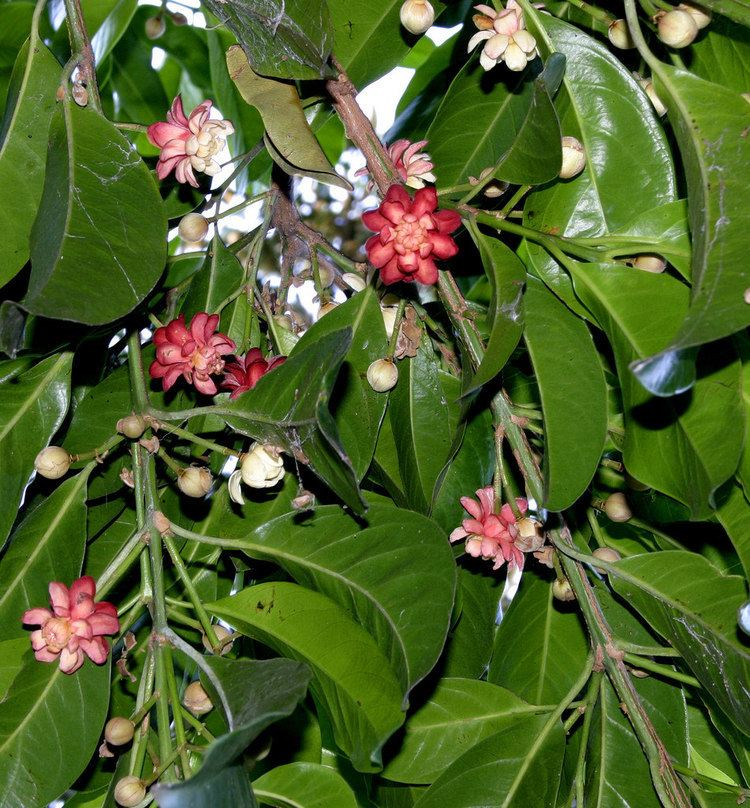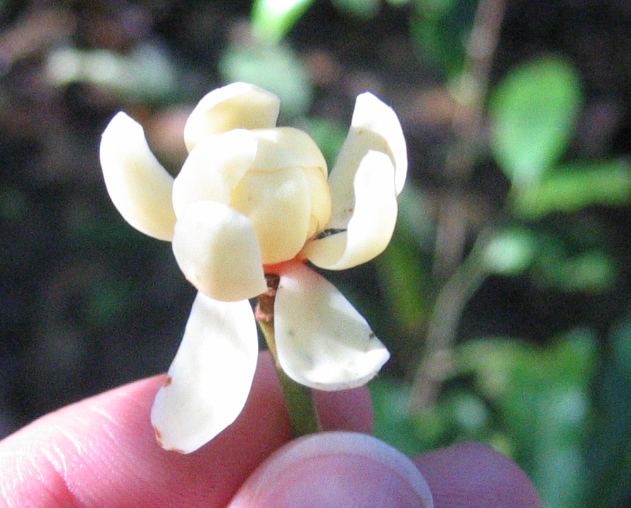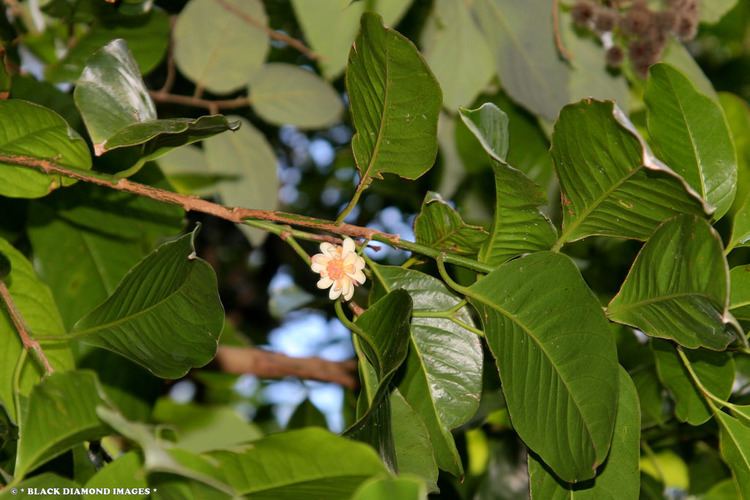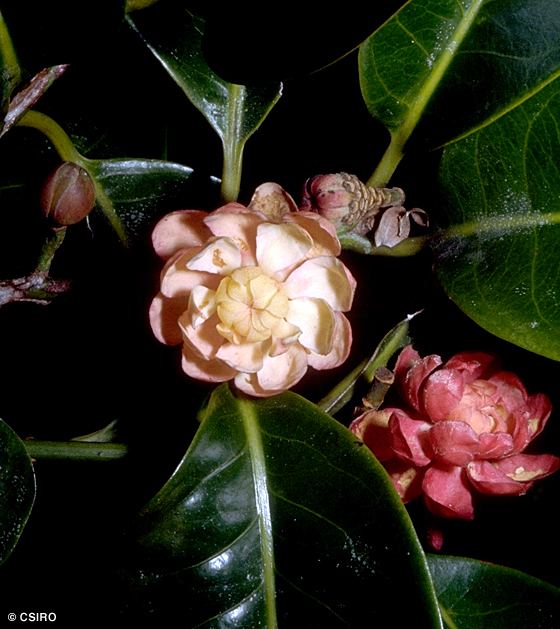Scientific name Idiospermum australiense Rank Genus | Species I. australiense Higher classification Calycanthaceae | |
 | ||
Similar Calycanthaceae, Laurales, Chinese sweetshrub, Gomortega, Trimeniaceae | ||
Idiospermum is a genus containing a single species of tree, Idiospermum australiense, found in Australian tropical rainforests. Scientists recognise them as one of the species of the earliest known lineages to have branched out from the first flowering plants and still living today. Since as long ago as 120 million years, they continue living today only in the Daintree and Wet Tropics rainforests region of north-eastern Queensland. They grow naturally only (endemic) in very few locations in north-eastern Queensland (e.g. in Daintree National Park), in the very wet lowland parts of the forest, in groups of 10-100 trees together (rather than scattered individuals). Common names include Ribbonwood and Idiot Fruit (Hyland et al. 2010).
Contents

Description

Ribbonwood trees grow naturally in their wet tropical rainforest habitats as evergreens up to about 20–30 m (70–100 ft) tall. The simple leaves grow singly, in pairs or in whorls of 3-4, each one measuring about 12–25 cm (5–10 in) long and 5–9 cm (2.0–3.5 in) wide. The flowers measure 4–5 cm (1.6–2.0 in) in diameter, with all floral organs spirally arranged (Staedler, Weston & Endress 2007). The tepals are initially creamy white when the flower opens, then turn red as the flower ages. The "fruits" have very distinctive features and do not fit within the definition of true fruits as such: all the protective layers decay while still on the parent tree and each one released is an extremely large (8 cm (3.1 in) diameter) naked plant embryo (Staedler, Weston & Endress 2009). This is one of the very largest embryos in flowering plants. It is very toxic, inducing symptoms (in cattle) similar to strychnine (Hyland et al. 2010).
Reproductive organs

Plants have both male and female sex organs, but half of the flowers of the Ribbonwood do not produce any fertile female organs (Staedler, Weston & Endress 2009). Attracted by the scent and colour of the flower, small beetles and thrips are the main floral visitors (Worboys & Jackes 2005); they crawl in and lay their eggs within the center of the flower, which contains the flower's pollen. Within the flower some of the sticky pollen gets trapped on the insect's bodies, and if the next flower they visit is a receptive one, it will pollinate and produce the seeds. While most modern flowering plants produce seeds which have one cotyledon (monocotyledons) or two (dicotyledons), the seedlings of the Ribbonwood have between two and five cotyledons. Also the Ribbonwood can produce more than one shoot per seed (usually one per cotyledon).
Seeds and their dispersal ecology

The seeds are currently mainly spread through gravity dispersal, the seeds rolling down the steep mountain slopes to find their new home. The seeds are so toxic that most animals cannot eat them without being severely poisoned; however it is known that the native Musky Rat-kangaroo does disperse and bury some of these seeds. It has been suggested that the seeds were formerly dispersed by the now-extinct Diprotodon, on the basis that many Australian marsupials are adapted to cope with the toxins in Australian plants.

The plants have adapted a unique poison, a chemical called Idiospermuline contained within the seed, to prevent animals eating them. Researchers discovered the poison affects transmission of messages between individual nerve cells, which may cause seizures. In small doses this chemical can be used to save lives.
Scientific recognition
The first European–Australians to recognise the trees were timber cutters south of Cairns in the late 1800s, then it was thought to have become extinct. The Ribbonwood was then brought to the attention of the German botanist Ludwig Diels, who in 1902 described the species in the genus Calycanthus as C. australiense, a remarkable disjunction for this otherwise North American genus. It was later believed to be extinct again, because when Diels finally returned to the location where this tree was found, the natural vegetation had been destroyed for a sugar cane farm.
The species was re-rediscovered in 1971, after the poisonous seeds of the plant were found in the stomachs of dying cattle in the region. In 1972, the Australian botanist S. T. Blake reassigned it to the new family Idiospermaceae and the genus Idiospermum (idio-, "unusual", and spermum, "seed"). In its 2003 revision, the Angiosperm Phylogeny Group retained it in the new genus, but restored the species to the family Calycanthaceae.
